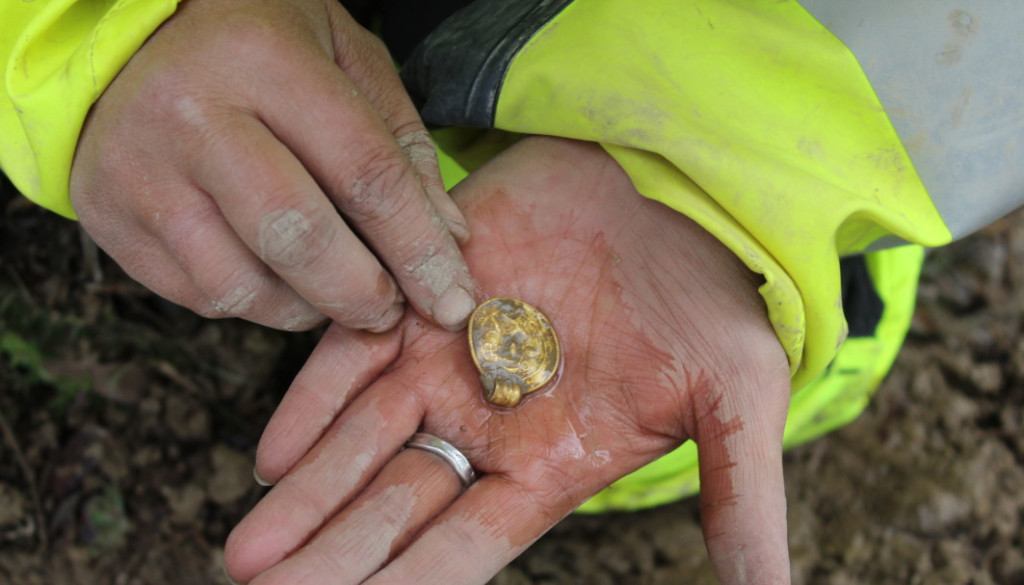ART WORLD NEWS
Gold for the Gods: Rare 1,500-Year-Old Pendants Found in Norse Ritual Hoard
Beneath clay soil in a field in southeastern Norway, archaeologists have uncovered seven gold pendants known as bracteates, Science Norway reports. It is the only such find in the last 70 years, and is an “incredibly rare” votive hoard, according to the three archaeologists heading the project: Jessica Leigh McGraw, Margrete Figenschou Simonsen, and Magne Samdal, all from the University of Oslo Museum of Cultural History.
Only the wealthiest and highest-status individuals would be able to afford such lavish offerings to the gods. “There is little doubt that these were items connected to aristocratic communities within a Germanic elite in Scandinavia,” the archaeologists explained.
Related Articles
Gold bracteates were common during the Migration Period, between the 4th and 6th century C.E. The pendants, thin coin-like pieces usually worn as jewelry, were based on Roman medallions—but with a distinct Norse twist. Instead of Roman emperors, the bracteates featured Norse gods and stylized animal figures.
Both C-type and D-type bracteates were found in the votive hoard. C-type bracteates show a large person with defined hair riding on the back of a horse—often interpreted as a representation of the Norse god Odin. D-type bracteates appeared later in the 6th century C.E. and depict stylized animals.
Researchers are not yet clear whether the hoard was buried before or after the Fimbul winter, a period from 536–540 C.E. when volcanic eruptions filled the sky with ash. The sun didn’t shine for over a year, and there were crop failures and mass starvation. But ritual gold sacrifices do appear to have increased in the 6th century. “The Gods needed pleasing,” the archaeologists explain. “In a time of bad years and insecurities, people may have felt a heightened need to try and avoid dangers and seek protection.” The team will continue to study their findings.











